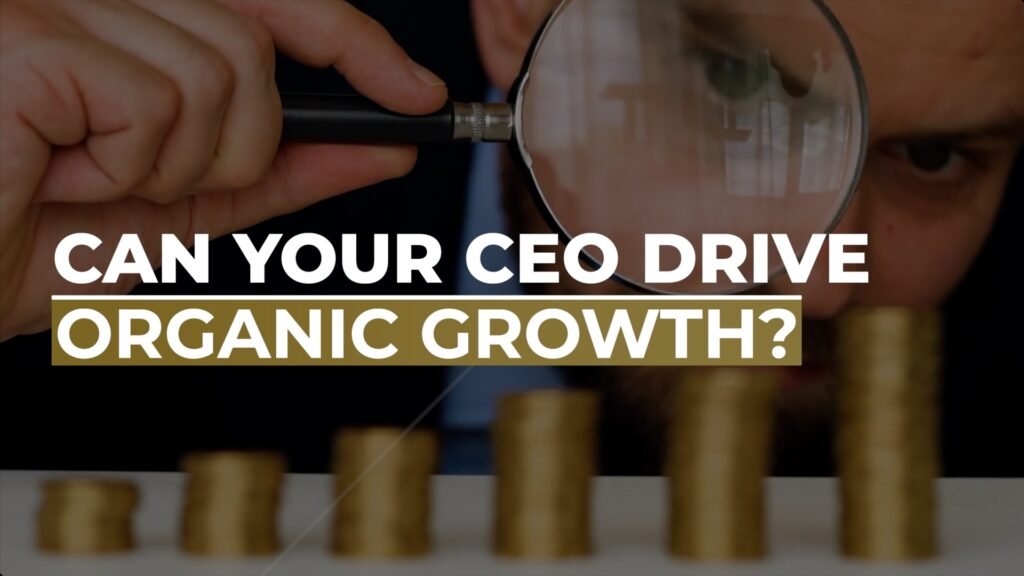
When it comes to recruiting a CEO, the right choice of candidate allows you to create enormous value. The foundation stone of value creation is your CEO’s ability to grow the business without investment or acquisitions organically. One of the core jobs of your CEO is to maximize your organic growth rate, which means ensuring cash is used effectively and all resources are deployed in the most efficient manner to deliver the fastest growth rate that can be achieved. This, of course, is on one side of the coin, with inorganic growth on the other side, which is when companies take action to claim additional market share, through mergers and acquisitions, which requires a dedicated article of its own
Debt can be a great accelerator for a business, unfortunately it can also be it’s death nail
When it comes to organic growth, if a company knows it has a winner in its product or service portfolio, it should optimize its growth curve by investing as much as it can in the winning business unit. In this case, a good CEO will use a reasonable amount of debt to accelerate growth. Therefore, it’s useful to ask your CEO candidates “What is your philosophy on gearing?” As some debt will have to be involved in order to maximize growth, it’s crucial to understand how the CEO thinks about debt, and how much debt they consider to be too risky. The board and CEO should be aligned on where the line in the sand is when it comes to gearing, how much threatens the company, versus the amount that gives the company a competitive advantage; too little and your growth rate is not optimized, too much and your interest expense eats up your cash flow.
They should also explain how debt should be used, and how the organization should be thinking about debt. This may mean creating a credit enhancer such as ringfencing assets to access new debt facilities or even changing the capital structure to increase the gearing ratio of your business. Ask your candidate “Give me an example of a time when you changed the capital structure”, to determine if the candidate is able to look at your P&L and identify hidden or locked value and more importantly, whether they know how to tap into it and unlock it.
Next, examine your candidate’s awareness of the working capital cost, by asking: “If you could reduce your working capital by one day, how much money would that save? And what would you do with the extra cash?” Not only will that test their awareness, but it will also reveal if they are working to reduce their cash-to-cash cycle time. You’ll be able to understand if that candidate has a tight grasp on the numbers, for instance, whether or not it’s possible for the company to fund its own growth by reducing or eliminating its working capital and using the excess money to fund expansions, such as opening new branches and locations.
Your ideal candidate will have a clear approach to calculating their cash-to-cash cycle, will know the cost of capital, and will then have either an aggressive or conservative approach to how much of the cash-to-cash cycle they keep covered. One cash to cash cycle should be covered, as a minimum, however, many CEOs do not even cover this much relying on net-net new sales, investment, and debt, to cover the gap. This can work in a bull market but if the winds change and the economy slows, the company will have a cash flow issue or worse. On the other hand, CEOs who are covering more than two cash-to-cash cycles are keeping excess cash on hand, which will protect the company’s liquidity in a market crash but will also strangle the business’ ability to grow, as cash is being hoarded.
Once you understand your CEO’s ability to unlock the cash in your business, you need to make sure that they have a distinctive framework for how that cash should be used, by asking “How do you use your retained earnings?” in order to understand how they utilize excess cash, and how much of that cash they believe should be paid as dividend to shareholders, as well as how much should be reinvested in the business, as growth capital, and how much of that cash they believe should be used as working capital and cash reserve.
For example, the candidate may answer “We take 15% of retained earnings to be paid as dividends, 40% is reinvested as OPEX, and 30% we put in CAPEX and 15% we add to our M&A war chest”. While this formula may not be strictly adhered to, or maybe your candidate is not so precise, they should still have some benchmarks for how retained earnings are to be spent. This is because we want to make sure our CEO is preemptively having these discussions with the board and setting the right corporate governance framework to ensure that, when the company does get a cash windfall, the board members are not over-dipping in their dividends, leaving the company vulnerable, or when the market is contracting, your CEO has policies in place to help stave off the board from digging too deep into the cash reserves. It’s important here to take a close look at the metrics used by the candidate to ensure they are using custom core metrics to make their own financial dashboard to devise financial strategies to create a competitive advantage.
Looking for more questions to ask a CEO? Read “CEO Assessment and Selection” to learn more about the 7 universal success factors for the Chief Executive Officer, and unlock over 450 fail-safe questions that allow you to recruit top performers. Get more free CEO Assessment tips at https://tpgleadership.com/ceo-assessment-selection-book/ .
If you like this essay, you can see our video here
